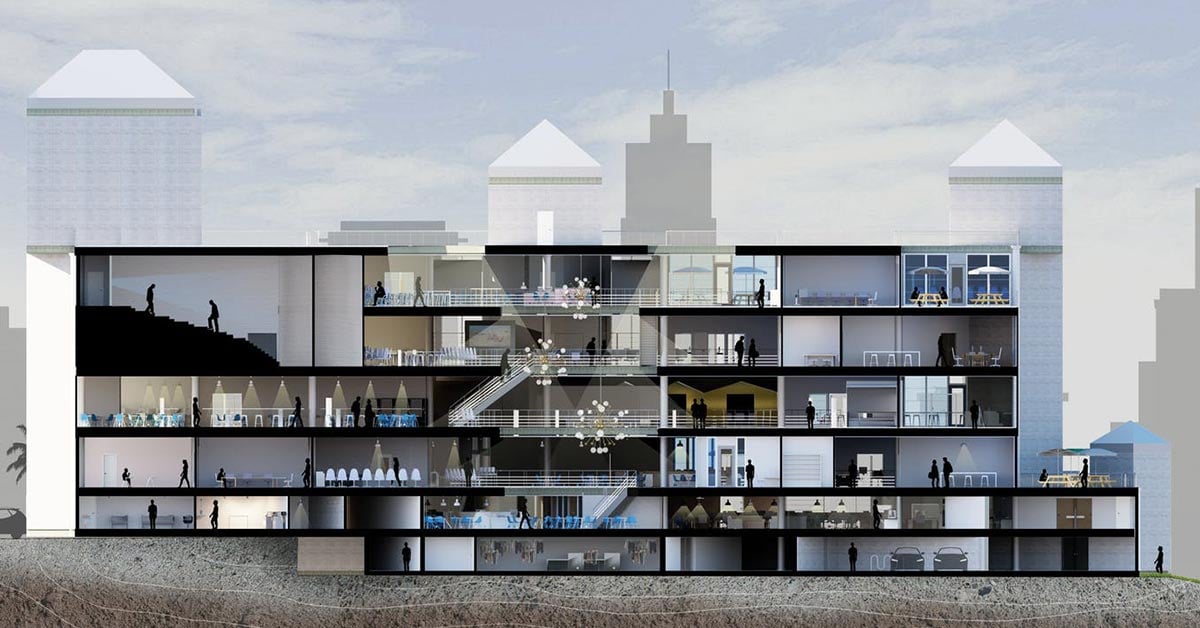
Explore how interior design impacts learning environments. Learn about key considerations, compliance challenges, and the importance of sustainability.
Interior design plays an important role in any industry – the education sector is no different.
By carefully considering key factors such as layout, furniture, lighting and colour schemes, interior designers optimise spaces to be functional, efficient and fulfil their intended purpose.
This is known as commercial interior design. It’s the art and science of creating spaces in public spaces that inspire, engage and serve the needs of businesses and their customers. It’s where creativity meets function, and where aesthetic meets desired outcome.
Interior design isn’t just important for commercial spaces. In healthcare settings, interior design can create safe spaces for residential care occupants or patients in hospitals, inspiring healthcare workers, patients and carers alike, boosting physical and mental wellbeing for all.
The learning experience
Successful interior design in educational spaces can enhance and improve student engagement and academic performance.
It influences the learning experience in many ways, reinforcing the importance of collaboration between interior designers and educators. A few examples include:
- Space for different learning styles. Different types of students learn most effectively in different ways. Some learn best from independence and focused learning, while others prefer collaboration and discussion – effective interiors cater to all.
- Integration of technology. Technology is an ever-changing element in modern day education, so seamless integration into education facilities is key to enhancing the learning experience.
- Accessibility. Clear signage and obstacle-free pathways create a learning space which is inclusive of all, ensuring those with disabilities or special requirements have equal opportunities for learning and participation.
- Comfort. Ergonomic furniture and comfortable surroundings are crucial – discomfort can be a major distraction to learning.
- Noise levels. Universities and educational spaces can be noisy. Strategic use of sound-absorbing materials such as acoustic panels, carpets and curtains can make a significant change to noise levels, creating quieter spaces for peaceful, undisturbed studying.
- Adaptability: Flexible furniture arrangements, such as modular design, can make educational spaces multipurpose and more adaptable.
- Aesthetics. Colour schemes, access to natural light and similar elements are all key considerations for commercial interior designers.
Compliance and standards: The challenges of designing for education
One of the major challenges when designing educational spaces is striking a balance between regulations and creativity. Educational spaces can be both compliant with safety codes and educational standards as well as creative, innovative and inspiring while still complying with law. It’s a commercial interior designer’s job to recognise both values equally.
Why sustainability matters
The biggest change in modern interior design practice is creating sustainable spaces.
From the use of material and lighting systems to waste-reduction and carbon offsetting, environmental impact is a key consideration for current designers. Planning and creating sustainable interior design practices means educational facilities can demonstrate their commitment to the environment, as well as providing students with valuable learning experiences that promote environmental awareness and social responsibility. Ultimately, it brings a positive impact for all.
How you’ll benefit from an online MA in Interior Design
An online MA in Interior Design can help you understand the challenges and opportunities of creating spaces for the educational sector.
Our online, part-time MA will provide opportunities for those interested in enhancing their specialist practice knowledge in interior, architecture, product or textile design disciplines, blending research and practice with creative theory.
If you’re interested to learn more, check out our AUB Online MA Interior Design course page:
Featured image: Ashley Maselin
Related posts
Passivhaus: The gold standard in energy efficiency
Learn more about Passivhaus-standard building and what criteria constructors need to meet to be...
Read the storyHow to become a freelance interior designer
Turn your interior design passion into a freelance career. From portfolios to rates, here's all you...
Read the storyWhat does ‘reinvent’ mean in interior design?
Discover what reinvention means in interior design, its wider impact on society and where to go to...
Read the storyStart your creative journey here.
Want to chat or ask a few questions? Fill this in and we’ll give you a call back.
